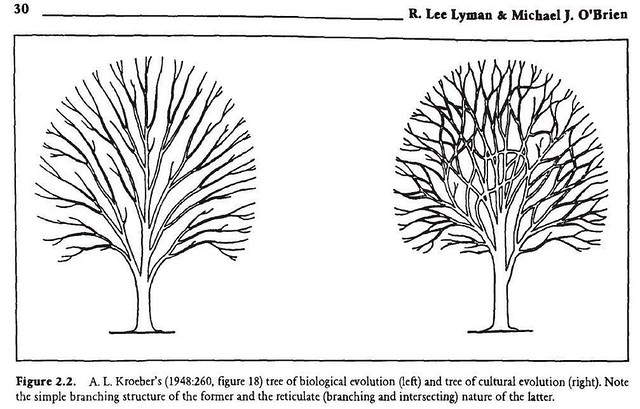 One of the things which I associate with the symbiology revolution of the 1960s and 1980s is
a much bigger emphasis on the significance of merging and joining
in evolution. If you look at the modern synthesis of the 1930/40s, merging and joining were
missing pieces of the puzzle back then.
One of the things which I associate with the symbiology revolution of the 1960s and 1980s is
a much bigger emphasis on the significance of merging and joining
in evolution. If you look at the modern synthesis of the 1930/40s, merging and joining were
missing pieces of the puzzle back then.Symbiology brought with it a flood of understanding of the significance of evolution via aggregation. Now we know that merging and joining are large and important aspects of organic and cultural evolution. Merging and joining are fundamental in sexual recombination and parasitism - both of which are extremely widespread in both the organic and cultural realms.
Merging and joining between species are not evolutionary phenomena which are confined to microorganisms. Current estimates are that around 8% of human DNA comes from viruses - rather than from our ancestors. This gives some indication of how significant between-species joining is in the evolution of multicellular eucaryotes.
The idea of splitting-only evolution still persists in some areas - like an hangover. Evolution is still sometimes characterised as "descent with modification". Or people say that evolution consists of "inheritance with variation and selection". These are splitting-only descriptions of evolution. The idea of a "tree of life" is common, but not very accurate. Life is web-like - much more so than most trees are.
It's true that splitting is more common than merging and joining. However, merging and joining are pretty significant. They are how living things combine their solutions to environmental problems.
The issue relates to cultural evolution. Krobner (1948) argued that organic evolution was tree-like while cultural evolution was web-like. He used the diagram associated with this post to illustrate his point.
However, we now know that both the organic and cultural realms exhibit web-like evolution. The picture of organic evolution as consisting of splitting without merging or joining has proved to be a mistaken one. Instead, merging and joining have turned out to be ubiquitous evolutionary phenomena - present in both realms.
References
- Tyler, Tim (2013) On Lewontin's Principles
- Tyler, Tim (2014) Reticulation in phylomemetics










No comments:
Post a Comment